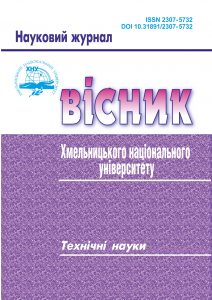IMPLEMENTATION OF A MODEL FOR DEPLOYING 6TH GENERATION MOBILE NETWORKS USING DRONES
DOI:
https://doi.org/10.31891/2307-5732-2023-329-6-49-55Keywords:
UAV - unmanned aerial vehicle, uUAV - unmanned untethered vehicle, tUAV - tethered unmanned aerial vehicle, BS - base stations, GS - ground station, MBS - macro base stationsAbstract
This article explores the possibility of implementing a network based on 6G mobile communication technology, which is currently in active development and creation. However, a significant issue in this context is the limited battery capacity of unmanned aerial vehicles (UAVs), which significantly restricts their capabilities and productivity. Such limitations in power supply lead to UAVs having to regularly land for recharging, resulting in interrupted missions. This article proposes a new approach to address this problem by using tethered unmanned aerial vehicles (tUAVs). The main idea is to establish a network where tUAVs are continuously powered and data is transmitted through a tether that connects them to a ground station (GS). This approach would allow avoiding the loss of connectivity with tUAVs during recharging, ensuring uninterrupted monitoring and control. A detailed examination is carried out regarding the concept of connecting tUAVs to the GS using a specialized tether that simultaneously provides power and transmits data. Powering through the tether would enable tUAVs to leave the network coverage area without a signal only for a short time, such as during maintenance and repairs. A comparative analysis is conducted between tUAVs and untethered UAVs (uUAVs). The advantages and disadvantages of each approach are assessed in terms of their productivity and the ability to maintain continuous communication in conditions of limited energy. A comprehensive analysis of potential applications of the technology is also undertaken, including a Monte Carlo scenario that examines the performance of tUAVs and uUAVs in various coverage scenarios. The modeling results indicate that tUAVs with a 120-meter tether can provide up to a 30% increase in coverage probability compared to uUAVs. Finally, the article discusses the challenges arising in the context of implementing the proposed model, as well as future research directions that may contribute to further development of this innovative technology.

